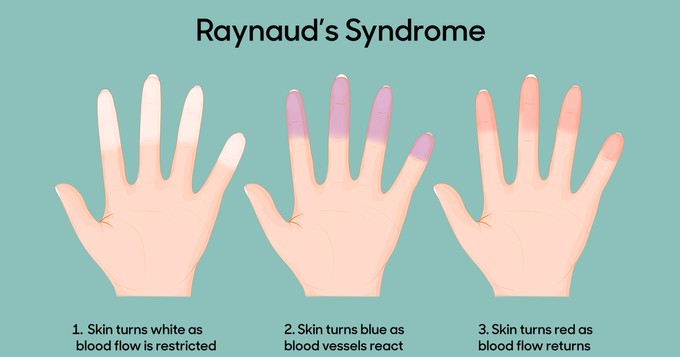


Symptoms of Raynaud’s Phenomenon
Raynaud’s phenomenon happens when episodes or “attacks” affect certain parts of the body, especially the fingers and toes, causing them to become cold and numb, and change colors. Exposure to cold is the most common trigger, such as grabbing hold of a glass of ice water or taking something out of the freezer. Sudden changes in ambient temperature, such as when entering an air-conditioned supermarket on a warm day, can lead to an attack. Emotional stress, cigarette smoking, and vaping can also trigger symptoms. Parts of the body besides the fingers and toes, such as the ears or nose may be affected as well. Raynaud’s attacks. A typical attack progresses as follows: The skin of the affected part of the body turns pale or white due to lack of blood flow. The area then turns blue and feels cold and numb, as the blood that is left in the tissue loses its oxygen. Finally, as you warm up and circulation returns, the area turns red and may swell, tingle, burn, or throb. Only one finger or toe may be affected at first; then, it may move to other fingers and toes. The thumbs are less likely to be affected than the other fingers. An attack may last a few minutes or a few hours, and the pain associated with each episode can vary. Skin ulcers and gangrene. People with severe Raynaud’s phenomenon can develop small, painful sores, especially at the tips of the fingers or toes. In rare cases, an extended episode (days) of a lack of oxygen to tissues can lead to gangrene (cellular death and decay of body tissues). For many people, especially those with the primary form of Raynaud’s phenomenon, the symptoms are mild and not highly troublesome. People with the secondary form tend to have more severe symptoms.

